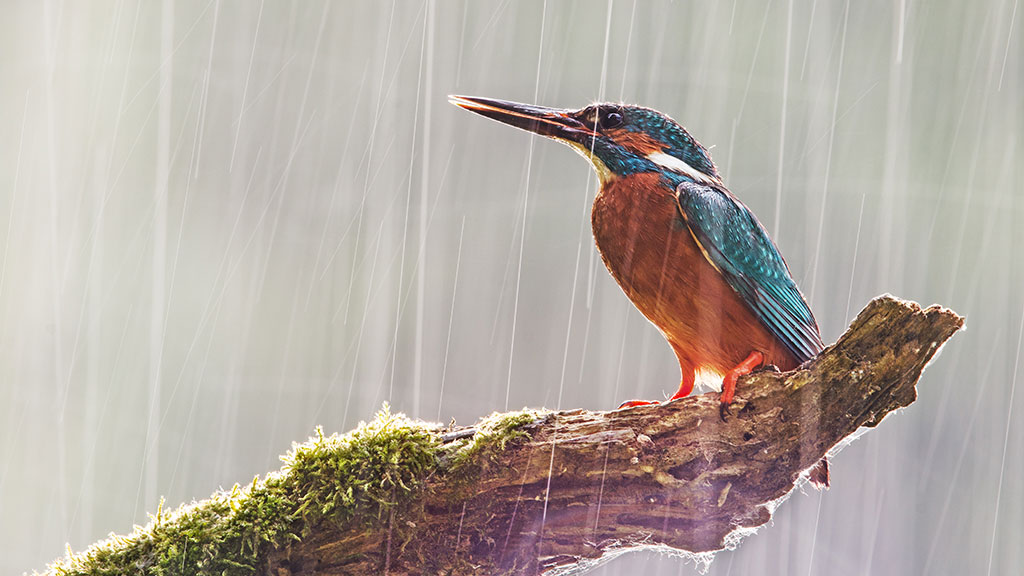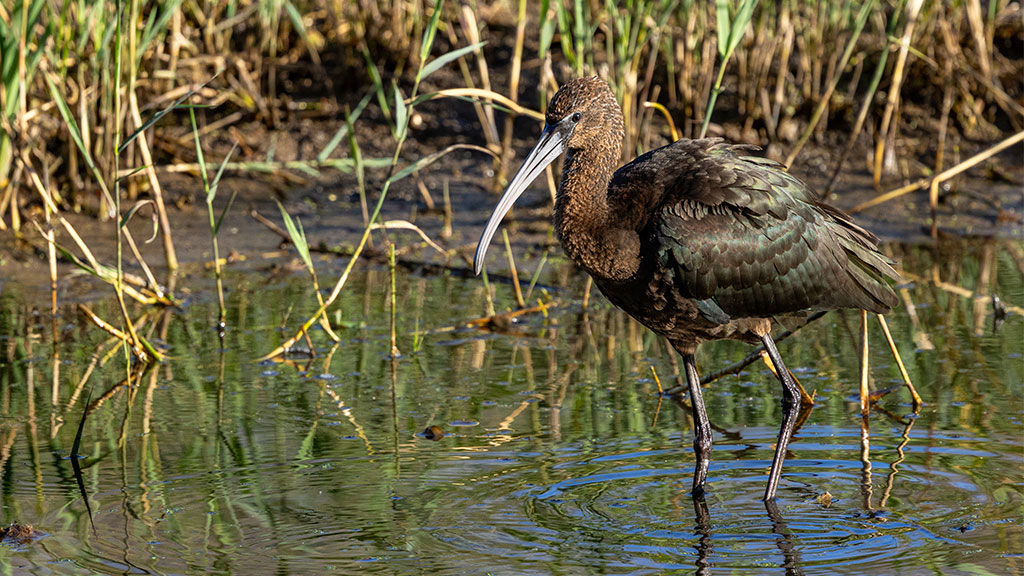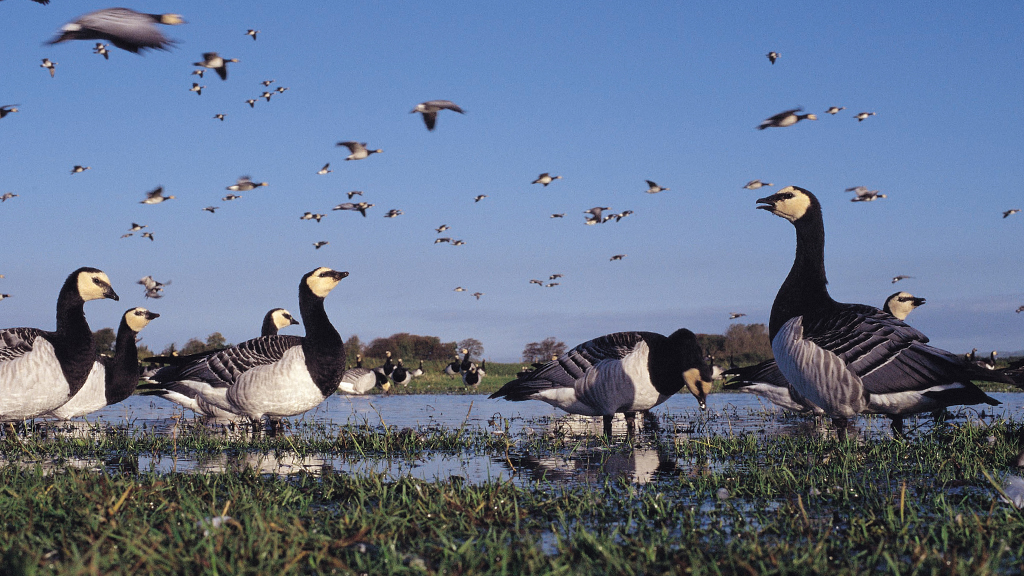Step into the spellbinding world of fungi: Why the UK’s wetlands are a fungal wonderland
Fungi might not have the star power of birds or otters, but venture into a WWT wetland site in autumn and you’ll find yourself in the midst of a quiet, curious kingdom that’s bursting with life, colour, and mystery. From brilliant crimson waxcaps to ghostly inkcaps melting back into the soil, fungi are the secret stars of our wetlands. And they’re waiting for you.
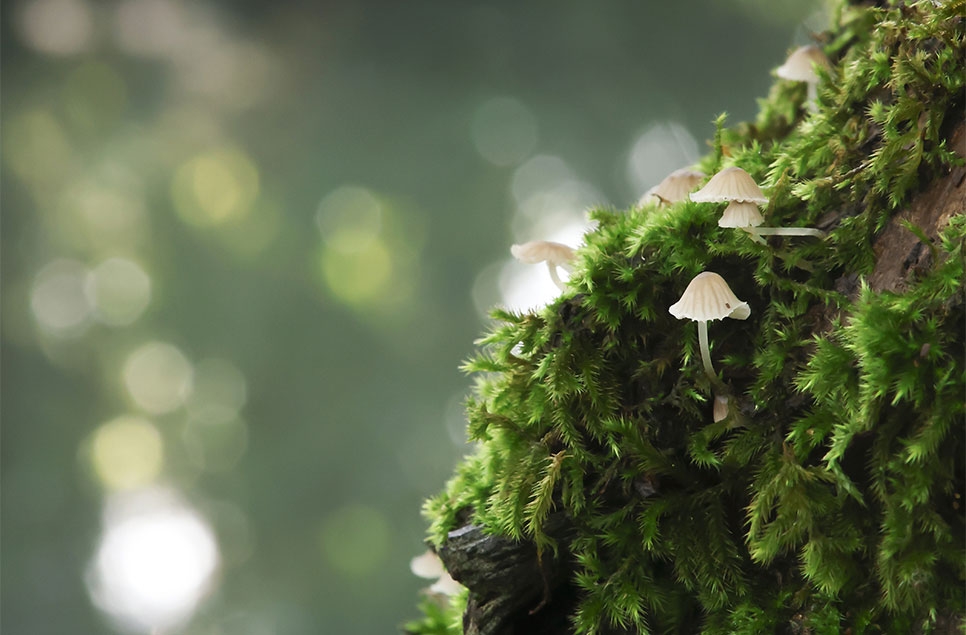
Where can you find fungi in the UK?
Short answer? Pretty much everywhere. But wetlands, woodlands, and undisturbed grasslands are some of the best places to look for them. Fungi thrive in the damp, rich soils and decaying wood found in our reserves - from rotting logs and leaf litter to mossy tree trunks and hidden underground mycelium networks.
Visit any WWT site during fungi season (late summer through autumn) and you’ll discover a feast for the senses. Slimy, spiny, powdery, puffballing - they pop up underfoot and some, like the honey fungus, even glow in the dark!
What types of fungus grow in the UK?
The UK is home to over 15,000 species of fungi - some familiar, many fantastical. Here are just a few of the stars you might meet:
- Dead man’s fingers: This spooky looking fungus grows up to 8cm high, mainly spotted on dead tree stumps and branches of sycamore.
- Shaggy inkcap: Also known as the lawyer’s wig, this mushroom melts into a pool of inky blackness
- Fairy inkcap: Forming dense masses, fairy inkcap swarms over decaying tree stumps and their roots
- Candlesnuff: Also known as stag’s horn fungus it grows in groups on dead wood.
- Bloody brittlegill: This large fungus is brightly coloured and mainly found around the base of pine trees
Get to know your fungi with this spotter sheet.
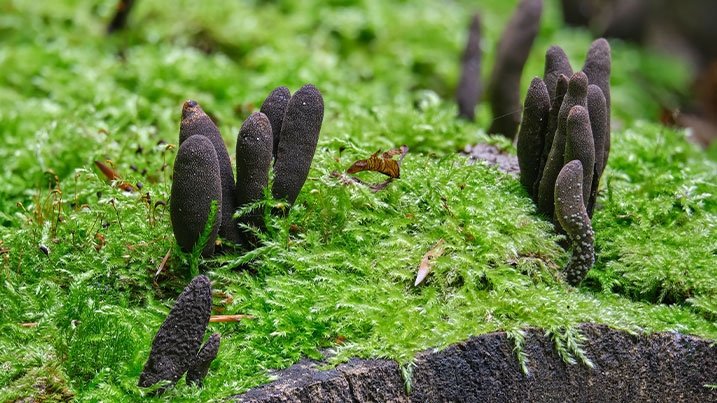 Dead man's fingers
Dead man's fingers
Are fungi plants?
Here’s where things get interesting. Fungi are not plants or animals. They’re part of their own kingdom entirely. They don’t photosynthesise; instead, they digest their food externally, breaking down dead material and recycling nutrients back into the ecosystem.
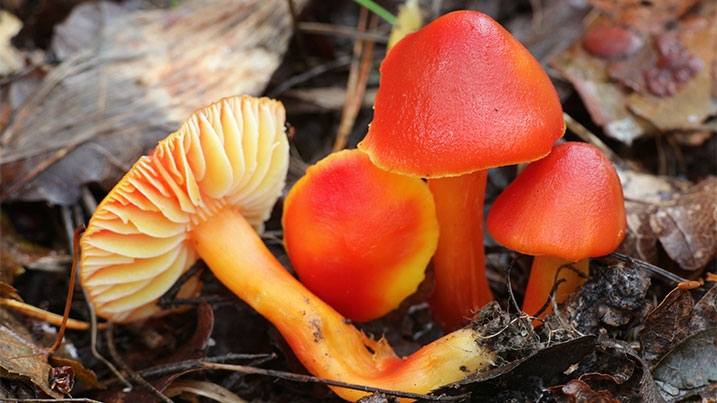 Crimson waxcap
Crimson waxcap
Are fungi dead or alive?
A mushroom is just the fruit - think of it like an apple. The real organism, the mycelium, lives underground or within wood and is very much alive. It’s made up of threads called hyphae that spread out like roots, connecting trees and other plants, swapping nutrients, and even communicating. Some mycelial networks can live for centuries.
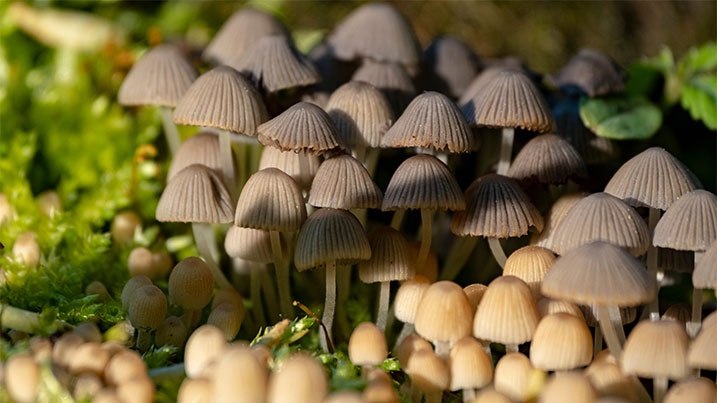 Fairy inkcap
Fairy inkcap
Which UK fungi are poisonous?
Many mushrooms are harmless. Some are even edible. But a few can be deadly. It’s crucial never to forage without expert guidance. Some of the most toxic UK fungi include:
- Death cap: As lethal as its name suggests
- Destroying angel: Pure white and beautifully sinister
- Panther cap: Looks like a fly agaric but is far more dangerous
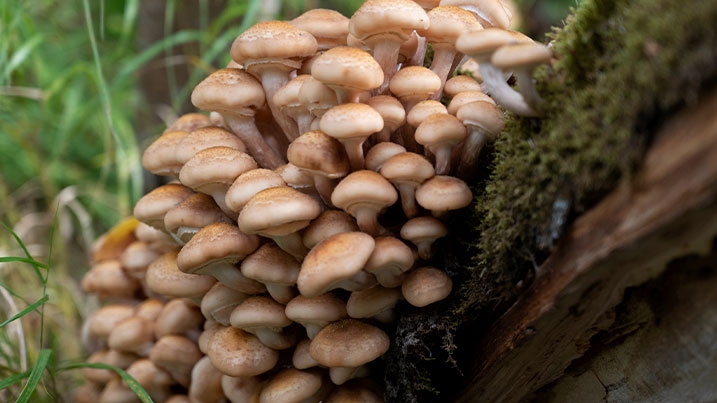 Honey fungus
Honey fungus
Why are fungi important?
Fungi are the unsung heroes of the natural world. They are nature’s great recyclers, breaking down dead wood, leaves and other organic matter, returning vital nutrients to the soil and keeping ecosystems alive and balanced. They also form underground networks called mycelium that help protect trees and help them communicate via the Wood Wide Web. They also form symbiotic relationships with many of our plant species. They help us too. From giving us life-saving antibiotics, to helping make bread and beer. Some species are even being used to clean up oil spills, eat plastic, and build biodegradable structures.
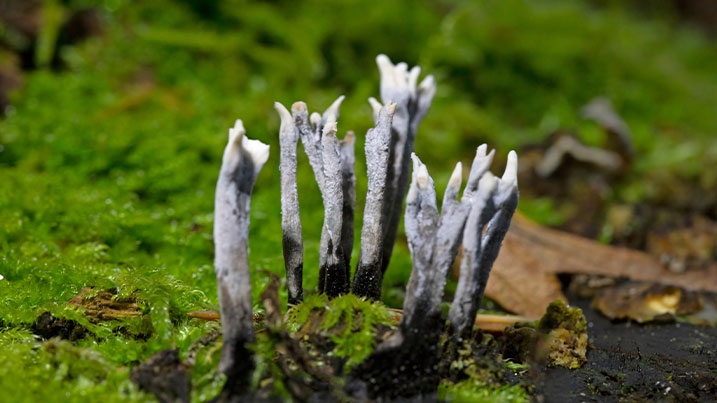 Candlesnuff
Candlesnuff
Will fungi take over the world?
If you’ve watched ‘The Last of Us’, you might be wondering, could fungi really take over humanity? The hit series is based on a real genus of fungi called cordyceps, which does infect insects in mind-bending ways. But don’t worry, there’s no evidence this fungus can or will ever infect humans like that.
What is true, though, is that fungi are amazingly powerful. Fungi outnumber plants six to one. So, are they taking over? Not in a zombie-apocalypse kind of way. But in shaping ecosystems and silently supporting life? Absolutely.
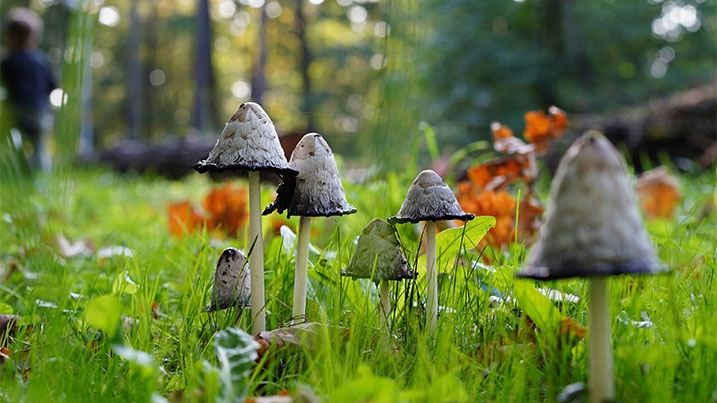 Shaggy inkcap
Shaggy inkcap
How you can help fungi, even in your own garden
Helping fungi thrive starts with letting nature take the lead. Leaving dead wood, fallen leaves, wet, moist areas and decaying logs in your garden creates essential habitat for fungi to grow and spread. Avoid using chemical fertilisers or fungicides, as these can harm the delicate underground networks fungi rely on. By keeping things a little wilder and wetter, like mulching with natural materials, avoiding over-tidying, and welcoming rot, you can create a mini haven where fungi can flourish, right on your doorstep.
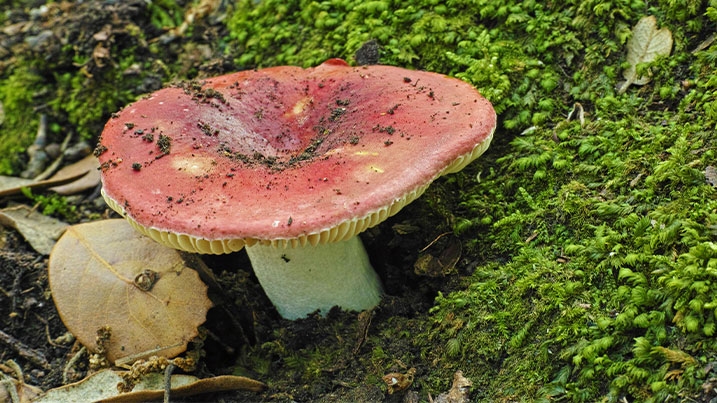 Bloody brittlegill
Bloody brittlegill
Experience the magic yourself at WWT
There’s no better way to fall in love with fungi than to see them in the wild and our wetland reserves offer the perfect moist, water-rich habitats for fungi to flourish. So, get down to your local WWT site and discover the hidden treasures underfoot. Whether you’re a seasoned mycophile or a curious first-timer, the fungal world has plenty of wonder to go around.
Explore the super natural this October half-term
For those who love the super natural but not the spook, visit our wetland centres across the UK this October half term. Get ready for a fun-filled Halloween, bubbling over with enchanting activities. From willow wand making and casting spells, to mixing potions, make magical memories with the whole family.
Plan your visit